Xylapan contains xylazine hydrochloride. For use in horses, cattle, dogs and cats where sedation is required. The main indications for use include the following: xylapan
General handling and transport of nervous or fractious animals.
Medical examinations and treatments such as X-rays or oral, genital and rectal examination.
Premedication for minor surgical interventions and for anaesthesia in combination with other analgesics, narcotics and inhalant anaesthetics.
Xylapan Injection for Horses, Cattle, Dogs & Cats 50ml.
Presentation of xylapan xylapan xylapan xylapan
Solution for injection for xylapan.
Clear colourless aqueous sterile solution Each ml contains xylazine hydrochloride 23.32 mg (equivalent to xylazine 20.00 mg) with methyl parahydroxybenzoate (E218) 0.65 mg and propyl parahydroxybenzoate (E216) 0.35 mg as preservatives.
Uses of xylapan
For use in horses, cattle, dogs and cats where sedation is required. The main indications for use include the following:
General handling and transport of nervous or fractious animals.
Medical examinations and treatments such as X-rays or oral, genital and rectal examination.
Premedication for minor surgical interventions and for anaesthesia in combination with other analgesics, narcotics and inhalant anaesthetics.
Dosage and administration
Syringes and needles must be sterile. Clean area of injection site and swab with spirit.
It should be noted that dosage and routes of administration vary widely between species.
An appropriately graduated syringe must be used to allow accurate administration of the required dose volume. This is particularly important when injecting small volumes.
Cattle
Administer by intramuscular injection.
The dose rate is 0.05-0.3 mg/kg bodyweight (0.25 – 1.5 ml/100 kg bodyweight) according to the degree of sedation required. Very fractious animals may require the higher dose rates not exceeding 0.3 mg/kg bodyweight (Dose rate 4).
Dose | mg/kg | mg/50 kg | ml/50 kg |
1 | 0.05 | 2.5 | 0.125 |
2 | 0.10 | 5.0 | 0.25 |
3 | 0.20 | 10.0 | 0.50 |
4 | 0.30 | 15.0 | 0.75 |
The degree of sedation can be predetermined according to the dose administered:
Dose 1: Sedation, with a slight decrease of muscle tone. The ability to stand is maintained.
Dose 2: Sedation, marked decrease of muscle tone and some analgesia. The animal usually remains standing, but may lie down.
Dose 3: Deep sedation, further decrease of muscle tone and a degree of analgesia. The animal lies down.
Dose 4: Very deep sedation, a profound decrease in muscle tone and a degree of analgesia. The animal lies down.
After doses 3 and 4 cattle are likely to remain drowsy for several hours and should be kept in the shade.
Animals should not be disturbed until xylazine has taken its full effect. The first effects are usually seen within 5 minutes of injection and the maximum effect is produced ten minutes later. There is no struggling or excitement during induction or recovery.
If the required depth of sedation is not achieved it is unlikely that repetition of the dose will prove more effective. Repeating the procedure with a higher dose after 24 hours is recommended.
For any surgical treatment additional local anaesthesia should be employed.
Horses
Administer by slow intravenous injection, taking from one to two minutes. The dose rate is 0.6 – 1 mg/kg bodyweight (3-5 ml/100 kg bodyweight) according to the degree of sedation required and the response of the animal.
Depending on the dosage, light to deep sedation with individually variable analgesia is obtained. The horse does not become recumbent.
Nervous or highly excitable animals generally require the higher dose.
Older horses and those that have undergone severe physical exertion before treatment respond more readily to xylazine.
Animals should not be disturbed until xylazine has taken its full effect. This is usually within five minutes of intravenous injection and lasts for approximately 20 minutes.
If the required depth of sedation is not achieved it is unlikely that repetition of the dose will prove more effective. Repeating the procedure with a higher dose after 24 hours is recommended.
For painful operations, additional local or regional anaesthesia should be used.
The product can also be administered to horses as premedication for operations on the recumbent animal using chloral hydrate, barbiturates, ketamine or halothane.
Cats
Administer intramuscularly at a dose rate of 3 mg/kg bodyweight. (0.15 ml/kg bodyweight). The effect is adequate for procedures that are not associated with any considerable degree of pain. Premedication with atropine is advantageous. When used in conjunction with ketamine, xylazine premedication eliminates muscular stiffness during anaesthesia and maintains sedation throughout the recovery period. Barbiturate anaesthesia should not be induced until sedation is at its deepest, i.e. about 20 minutes after administration of xylazine. Under these conditions the dose of barbiturates is reduced by about half.
Dogs
Administer intramuscularly at a dose rate of 1-3 mg/kg bodyweight (0.05-0.15 ml/kg bodyweight). Other routes of administration may be used, but the effect is less predictable. Good sedation is usually achieved at the lower end of the dose range given above, but excitable or vicious animals require a higher dose. The effect is adequate for procedures that are not associated with any considerable degree of pain. For painful procedures the product may be used in combination with a local anaesthetic.
Premedication with atropine may be advantageous.
When used for pre-anaesthetic medication, xylazine reduces the dose required in the case of barbiturates by about half.
The product can also be used as a premedicant for ketamine induced anaesthesia.
Contra-indications, warnings, etc
This product is contraindicated for use at the latter stages of pregnancy except at parturition.
Because of the emetic effect which is sometimes produced, the product should not be used in cats and dogs with mechanical complications of the alimentary tract such as obstruction of the oesophagus, gastric torsion, or hernia.
Horse
Following intravenous injection there is a transient rise followed by a fall of blood pressure.
The usual precautions required for handling should always be observed even when a high dose of xylazine is given.
Cattle
In recumbent cattle, tympany should be prevented by maintaining sternal recumbency.
For operations in lateral or dorsal recumbency it is advisable to lower the head and neck in order to avoid inhalation of saliva or rumenal fluids. When high doses are to be employed the animal should be fasted for some hours beforehand.
After dose levels 3 or 4, cattle are likely to remain drowsy for several hours and should be kept in the shade.
Special precautions for use in animals
As the safety of xylazine use during organogenesis has not been proven by current methods, care should be taken during the first month of pregnancy.
Care should be taken with aged animals or those with compromised lung function or suspected pulmonary disease since xylazine will depress respiration.
In the event of respiratory failure, manual compression of the thorax is usually sufficient to restore normal respiration.
Calm, old or sick animals react more distinctly to the product.
Sedated animals should be kept under supervision until normal, and they should be segregated to avoid bullying by others.
Operator warning
Care should be taken to avoid accidental self-injection. To avoid accidental self-injection, one of the following procedures should be adopted. Either use two sterile needles, one to fill the syringe from the bottle and one to inject the patient, or once the required dose has been withdrawn from the vial, immediately remove the needle from the syringe, insert the needle into the injection site, and then connect the syringe to it. Used needles should be safely deposited in a closed container. xylapan xylapan xylapan xylapan xylapan xylapan xylapan xylapan xylapan xylapan
1. In the case of accidental oral intake or self-injection, seek medical advice immediately and show the package leaflet to the doctor but DO NOT DRIVE as sedation and changes in blood pressure may occur.
2. Avoid skin, eye or mucosal contact.
3. Immediately after exposure, wash the exposed skin with large amounts of fresh water.
4. Remove contaminated clothes that are in direct contact with skin.
5. In the case of accidental contact of the product with eyes, rinse with large amounts of fresh water. If symptoms occur, seek the advice of a doctor.
6. If pregnant women handle the product, special caution should be observed not to self-inject as uterine contractions and decreased foetal blood pressure may occur after accidental systemic exposure.
7. Advice to doctors:
Xylazine is an alpha2-adrenoceptor agonist. Symptoms after absorption may involve clinical effects including dose-dependent sedation, respiratory depression, bradycardia, hypotension, a dry mouth, and hyperglycaemia. Ventricular arrhythmias have also been reported. Respiratory and haemodynamic symptoms should be treated symptomatically.
Adverse reactions for xylapan xylapan xylapan xylapan xylapan xylapan xylapan xylapan
Transient hyperglycaemia is a common finding after administration
Horses
Following intravenous injection there is a transient rise followed by a fall of blood pressure.
Cattle
The swallowing reflex is reduced during the period when the action of the drug is at its peak.
Cats and dogs
If the stomach is full, vomiting occurs before sedation is complete. This is an advantage if general anaesthesia is to follow. The emetic effect is reduced by fasting for 6-24 hours before administration.
Use during pregnancy or lactation
The product is contraindicated for use at the latter stages of pregnancy except at parturition.
Interaction with other medicinal products and other forms of interaction
Analeptics (stimulants) will shorten the period or reduce the depth of sedation. In horses and dogs a deeper sedation with less side effects is achieved when Xylazine is combined with strong analgesics.
Horses
The concurrent intravenous use of potentiated sulphonamides with alpha-2 agonists has been reported to cause cardiac arrhythmia which may be fatal. It is recommended that intravenous administration of trimethoprim/sulphonamide containing products should not be undertaken when horses have been sedated with the product.
The limited information available indicates that alpha-2 blockers such as atipamazole may be effective in reversing the sedation and other physiological effects of the drug.
Overdose
In case of accidental overdose leading to respiratory failure, cold water douches and artificial respiration are indicated.
Withdrawal periods
Cattle
Meat and offal: One day
Milk: Zero hours
Horses
Meat and offal: One day
Pharmaceutical precautions
Do not store above 25°C. Following withdrawal of the first dose, use the product within 12 days. Discard unused material. Avoid introduction of contamination. Any unused veterinary medicinal product or waste materials derived from such veterinary medicinal products should be disposed of in accordance with local requirements.
Packaging Quantities of xylapan
Further information of xylapan
xylapan is an alpha 2 adrenergic agonist with sedative, analgesic and muscle relaxant properties. In cattle the degree of sedation can be predetermined according to the dose administered.
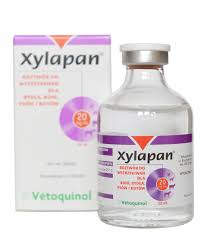
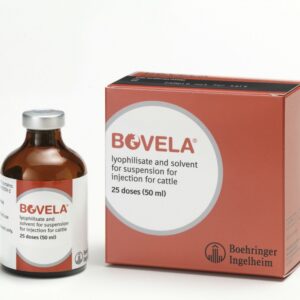
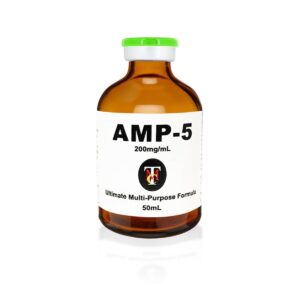
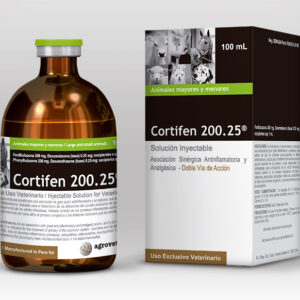
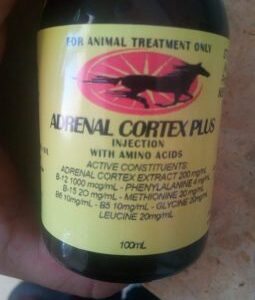
Reviews
There are no reviews yet.